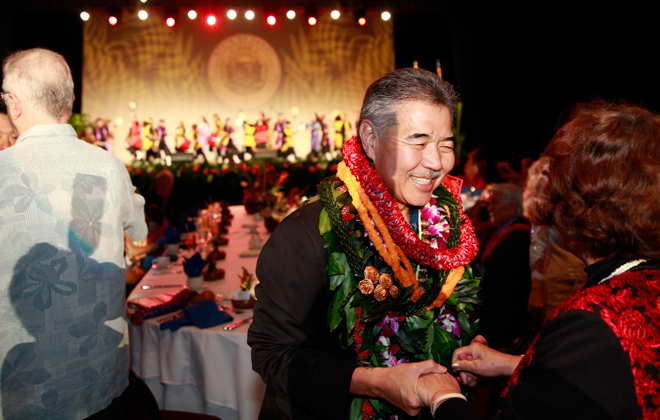Gov. David Ige spent $2 million on his historic campaign — or roughly $11.25 a vote.
The Democrat raised $2.4 million overall and had a $435,029 surplus, according to his final state campaign-finance report for the November election.
Ige is the first candidate for governor who voluntarily agreed to stay under the state’s spending limit to qualify for public funds to win since Gov. Ben Cayetano in 1994. He agreed to stay under the spending cap, which was $1.5 million in the primary and $1.5 million in the general election. He met the threshold for public funds for the general election and received $105,000 in public money, which his campaign used toward a television advertising buy in the week before the vote.

Ige and former Honolulu Mayor Mufi Hannemann, who ran for governor under the Hawaii Independent Party banner, were also the first major candidates for governor to agree to the spending limit since Linda Lingle, a Republican who lost a campaign in 1998.
After Ige’s upset of former Gov. Neil Abercrombie in the Democratic primary, several of the former state senator’s allies said the victory represented a blow against the influence of money in politics. Abercrombie, the first governor in Hawaii ever to lose re-election in a primary, spent $5.7 million and ended with a $139,612 deficit, his final campaign-finance report shows.
Former Lt. Gov. James "Duke" Aiona, the Republican candidate, spent $1.5 million, or about $11.44 a vote. He raised $1.6 million overall and had a $105,199 surplus.
Hannemann spent about $286,275, or roughly $6.66 a vote. He raised more than $383,425 and closed with a $9,647 deficit due to debts owed. The former mayor loaned his campaign $25,000 in late October.
Mainland super PACs supplemented the spending by the candidates, mostly through negative ads.
The American Comeback Committee, which was tied to the Republican Governors Association, spent $2.2 million in the islands. Hawaii Forward, financed by the Democratic Governors Association and the American Federation of State, County and Municipal Employees, spent $1.9 million.


